Tuesday, November 3, 2015
Organizing With Kids

I always preface these posts by reminding folks that I am no parenting expert, I am just sharing what has worked {and not always worked} for us personally. Being an organizing lovin' mom with three charming little guys always keeping me on my toes, has given me quite a few situations to problem solve around. However, I always have been a believer that every mom knows what is best for their kids and family and what works for me may not work for someone else.
I have shared a lot of these tips and tricks for organizing with children over the years, but thought it would be good to have a one-stop spot compiling my favorites in one place.
Ask The Experts
My first tips when it comes to organizing with kids, is to ask the experts. The experts being the kids themselves. Since I haven't been a kid in years {although I still love to act like one at times}, I tend to think with my grown-up mom brain. What makes perfect logical sense to me, probably seems way off base to my boys. So, I tackle organizing solutions in three ways with the kids:- I ask them to propose a solution to a specific problem
- I suggest a solution to a specific problem and let them add input and give me the thumbs up/down
- I implement a solution and ask them to test it out for awhile and give me feedback
For example, when it came time to organize their Lego collection, I had my own idea of how it would go down, and they had another. So, we went with their suggestion and years later it is still working. They opted to organize their pieces by color, while I would have thought that by piece type or collection would be easier. For them, the ability to quickly associate colors for searching and pick-up, made this a very simple solution for them to maintain.
Speaking of maintaining, I get asked a lot about if the system is still holding up. For the most part, absolutely. There are times when we pick up in a hurry and the kids toss all of their extra pieces into their build buckets or an empty bin and sort them back down later when they have more time. I really let them own this system and don't police it, as it was intended to make their lives easier and to allow them to better enjoy the building process. Whenever I ask if they still like the system, I get a great big thumbs up.
Get Them Involved
When our boys assist in sorting down toys, selecting items to donate, problem solving the systems, etc... I find they take more pride in maintaining it and understanding it. They contribute to the decision making of purging everything from toys to clothes along with the process of sorting/putting away the remainder of the items. I really strive for them to understand the importance of only keeping what we use and need, and that items that no longer longer make sense can live on for someone else to use through donating.Keep it Simple
I would say that our Lego system, is by far the most intricate of all of our systems. My goal is to always keep things as simple as possible for our kiddos to maintain. Typically, this means that using bins and baskets and allowing them to simply "toss" their items where they belong, is a win for us all. The more steps that a system requires, the quicker it fails.- Toys: Majority of our toys are kept within durable baskets that are low to the ground. During pick-up time, the kids can just scoop up their toys and place them back into the baskets. It is extremely quick and everything is sorted down in a really simple to understand way.
- Clothing: Our boys use canvas bins within their closet to hold many of the items they don't hang; such as shorts, pajamas, bedding and undergarments. Each of those bins is a bit of a jumbled mess on the inside as items are typically just piled in quickly, but at least the items are sorted and the bins conceal the chaos.
- Shoes: We have a shoe storage system right inside our door in which the kids can easily access to place their shoes inside. It flips open, they toss them in, and it flips shut. Easy peasy.
- School Gear: We don't have a large fancy entry with individual cubbies for managing coats, backpacks and personal items for each member of the family, therefore, we used a credenza to gain the same effect. The cabinets are low to the ground, making it easy for the boys to place their boots in the plastic basket with their snow-pants/hats/mittens, and place their backpack right beside it. They can put everything away without needing me to "reach" hangers and hooks.
Storing their belongings in a way that they can easily access them is hugely important in the success of gaining their approval and willingness to help.
Although I have been known to be a bit of a perfectionist, I don't want that for my boys. I want them to appreciate an orderly home, but not for it to become something that exhausts them or frustrates them. I don't want them to fight systems because they are too challenging to maintain. At the end of the day, I appreciate their helping hands, so letting go of everything needing to be folded perfectly or done in a specific way has been key for me. If they can get away with just tossing something in a concealed bin and moving on quickly, then I can appreciate that they are making an effort and things are tucked away until next time. I leave the perfectly stacked books and over-the-top orderly drawers to my personal spaces instead.
Love The Labels
I have been using pictures to label things all around the house since my boys were itty bitty. This of course was most helpful when they were younger and couldn't read words and just played the matching game instead. Even though my boys are now older and all are reading, there are times when I still use pictures just because they are visual and quick/easy to understand.Less is More
Reverting back to getting them involved in the purging and simplifying process, as with organizing anything, less really is more. By having less "types" of toys, we have less sorting down to do at pick-up time, less intricate systems to maintain and less bins to organize and purchase. We have always been proponents of expanding on the toys that the boys love and use regularly {building blocks, train tracks, cars, etc...}, vs. growing their collections to multiple mis-matched sets and the newest and "coolest" gadgets. Holidays are always the most challenging of course, so when folks ask, we share their favorite types of toys to expand upon. And once the kids receive their gifts, we assess together what they want to keep and what will head to the donate pile. It may seem awful to some that we have donated newly received gifts, but if they don't have a place to store the new items in our allotted space, the boys are then given the option to swap out the new toys with an existing item or donate it. If we were to keep everything we received without removing something at the same time, our home would be bursting and I would have to continuously invest in more and more storage solutions.Chore Charts?
So many moms love chore charts and with good reason. It allows kids to simply see at a glance what is expected of them each day and to celebrate their successes. I have done chore charts on and off over the years, and in the end I found that with or without a chart, consistency is the key.Just like for myself, it is the repetition and doing things over and over that allows things to become natural and routine. I found the same goes for the kids. After a few days of simple reminders of where their shoes and backpacks go when they come home from school, they were just doing it on their own. Having the same expectation over and over allows the kids to slip into a routine of putting things away where they belong, vs. fighting with them each time it needs to be done. Let me say, my kids are not perfect glowing angels that love to pick up and organize with permanent grins of delight. They have their moments and good and bad days and we go through periods of adjustment and struggle. Having routines in place, however, eliminates that element of surprise when they are asked to complete a specific task. I also find I have much less resistance when they are asked to help with things they do consistently and frequently, over something that is new and unknown.
I created a couple of easy to understand routine charts to help us all stay on the same page; they are also very helpful if someone were to take over and watch the kiddos while hubby and I are away.
We do have a collective cleaning chart that we use together as a family, vs. individual charts for each child. For the most part, our routine doesn't require us to even look at the chart any longer, but it was a really good way to establish the cleaning routine from the beginning, and is a good place to reference when we fall off track.
Positive Reinforcement
My kids now have a basic understanding that we all live together in our home, which we are extremely grateful for, and need to maintain it together as a family. I try to show my kids that it is a group effort, and often times we do our chores together to reinforce that we all take ownership. I also try to be mindful of the monkey see, monkey do effect. I have had many moments in the past where I have expected my kiddos to keep a clean playroom or make sure their laundry is always put away, but then I would look at my own disastrous studio or bed piled with laundry and remind myself that I should be leading by example.There are so many ways to positively reinforce organizing and cleaning with kiddos, everything from allowance to treasures to high-fives. When our kids were little, we made games out of pick-up time by matching toys to pictures and dancing, singing and getting really excited with them. Now that they are older, I make sure to thank them when I see their efforts, and when they receive privileges or a new piece of sports equipment, I reinforce that they earn those things because of their help.
Storage Solutions IHeart
When it comes to products and items I use when organizing with kids, it is always a thought out process. As sad as it is to say, kids are only kids for a short period of time. As they grow, what they need to store and organize changes year after year.- Bins and baskets: I try and select baskets and bins I know I can use in another area of my home once they are no longer being used for toys. The green baskets in our playroom can easily be moved to the garage, storage room, laundry room or a linen closet down the road.
- Cheap solutions: If I am unsure that I can reuse an item down the line, why invest too much money in it? That is why I scour thrift stores, Craigslist or shop at IKEA for many of the items we use to store our kid's belongings. I am sorry Pottery Barn Kids, this mama can't pay hundreds of dollars on an amazing kid sized play table. But this one from the Habitat ReStore? Absolutely.
- Furniture for the future: There are many pieces of furniture that function big, no matter what they are storing. Bookcases, deep cabinets, entertainment centers, dressers and credenzas are all versatile examples of furniture that can store toys and belongings for children now, and then continue to function in other ways as they grow.
- Storage ottomans: By far one of my most "go to" storage item, especially when rooms need to function for living and play. Storage ottomans look pretty and provide a place to rest your drink or feet, yet have oodles of concealed storage inside. When our kids were little, they were always filled with their favorite toys in our living room, and once they grew older, we started using them for storing their growing collection of craft supplies.
- Oversized baskets: These were our favorite solution when we had crawling and newly walking babies. Keeping baskets filled with a variety of plush and favorite toys was a great way to keep the attention of exploring kiddos who loved to tip and dump things out, and also a way to keep items stored in each room in a convenient to pick-up yet stylish way. We now use many of those same baskets for holding blankets and pillows in our living areas and bedrooms.
For links and references to many of the items I talked about above, you can find my favorite organizing with kids posts below.
Organizing with kids will be a bit different for everyone, and every child. Even things that work well for one of my kids, do not always work for another. It is always a good idea to assess your solutions and make adjustments as necessary. I have found that the most important piece of the entire puzzle is being flexible, understanding and open to change.
Now that I have shared my favorite tips and solutions, I would love to keep the discussion going and hear what is working best for you. How about more tips for organizing with really teeny tiny toddlers or older high school kids? Maybe moms of little girls can weigh in as well as I only have boys roaming our home. Any time saving sanity solutions that will help other moms out?
Subscribe to:
Post Comments (Atom)













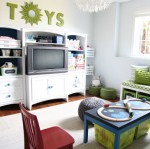
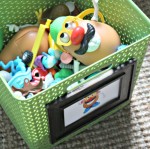
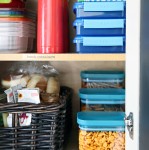
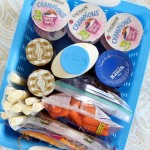
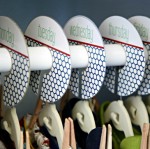
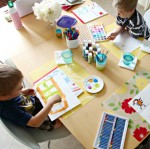
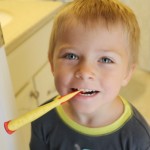

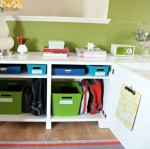
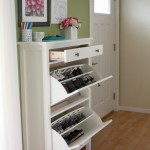
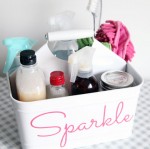
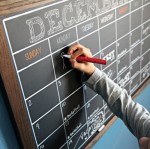
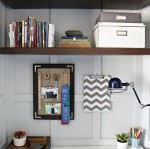
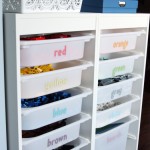
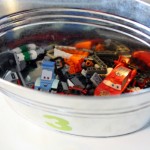

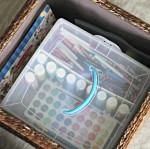
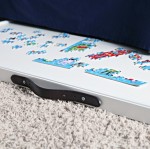
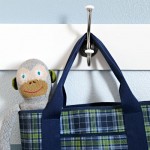

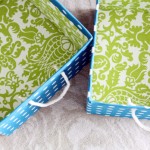
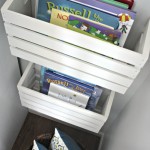
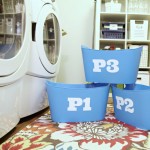
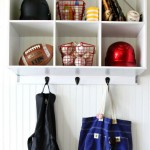
.png)
No comments:
Post a Comment